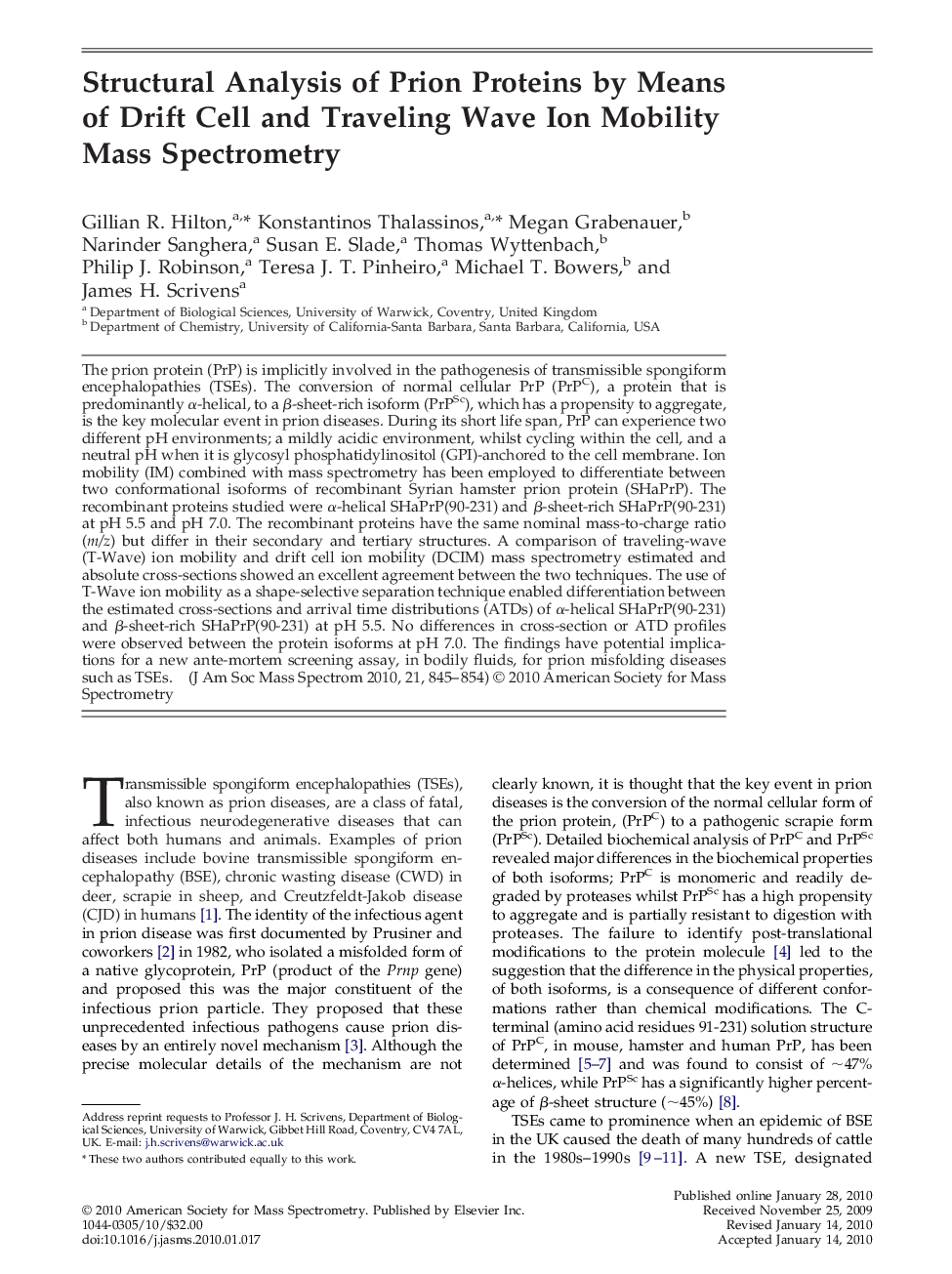| Article ID | Journal | Published Year | Pages | File Type |
|---|---|---|---|---|
| 1195145 | Journal of the American Society for Mass Spectrometry | 2010 | 10 Pages |
The prion protein (PrP) is implicitly involved in the pathogenesis of transmissible spongiform encephalopathies (TSEs). The conversion of normal cellular PrP (PrPC), a protein that is predominantly α-helical, to a β-sheet-rich isoform (PrPSc), which has a propensity to aggregate, is the key molecular event in prion diseases. During its short life span, PrP can experience two different pH environments; a mildly acidic environment, whilst cycling within the cell, and a neutral pH when it is glycosyl phosphatidylinositol (GPI)-anchored to the cell membrane. Ion mobility (IM) combined with mass spectrometry has been employed to differentiate between two conformational isoforms of recombinant Syrian hamster prion protein (SHaPrP). The recombinant proteins studied were α-helical SHaPrP(90-231) and β-sheet-rich SHaPrP(90-231) at pH 5.5 and pH 7.0. The recombinant proteins have the same nominal mass-to-charge ratio (m/z) but differ in their secondary and tertiary structures. A comparison of traveling-wave (T-Wave) ion mobility and drift cell ion mobility (DCIM) mass spectrometry estimated and absolute cross-sections showed an excellent agreement between the two techniques. The use of T-Wave ion mobility as a shape-selective separation technique enabled differentiation between the estimated cross-sections and arrival time distributions (ATDs) of α-helical SHaPrP(90-231) and β-sheet-rich SHaPrP(90-231) at pH 5.5. No differences in cross-section or ATD profiles were observed between the protein isoforms at pH 7.0. The findings have potential implications for a new ante-mortem screening assay, in bodily fluids, for prion misfolding diseases such as TSEs.
Graphical AbstractTwo different prion protein (PrP) conformational isoforms, representative of healthy and diseased PrP, were analyzed by means of ion mobility mass spectrometry.Figure optionsDownload full-size imageDownload high-quality image (144 K)Download as PowerPoint slide
